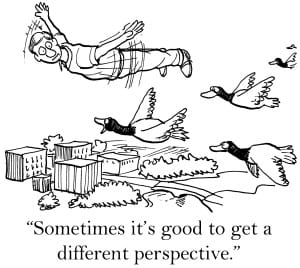‘Thought Leaders’, and ‘Thought Leadership’, there’s so much in the air these days, isn’t it? Well, here we’ll attempt to throw some light on a topic that has taken the Digital marketing space by storm.
Precisely we shall go on to describe it as, ‘A strategy that represents individuals’ or brands’ unique perspective on a key issue and the steps taken to identify themselves as experts among stakeholder groups.’ Thought Leadership should be an entry point to a relationship. It should intrigue, challenge and inspire even people already familiar with a Company.
Moving ahead with Thought Leadership
As Daniel Rasmus says, “Thought leadership should help start a relationship where none exists, and it should enhance existing relationships.” Additionally, thought leadership content has to be conveyed in the right way and via the right platform. The communication medium must befit the message. Otherwise, it runs the risk of falling on deaf ears or worse, creating a negative backlash.
Leveraging Thought Leadership Strategy
There are a few questions to ask yourself before you step forward to strategize thought leadership content. Do you think the message that you’re conveying will benefit existing users/ followers or is it perhaps more suited to the stakeholders of an organization? Does it influence opinions or does it create solutions to vexing issues? Can the topic be kept in continuum or is it a restricted one time addressal. These are just some of the points that need to be mulled over before the content goes out on the www.
To elucidate the above points, we comprehend here, that thought leadership is the perceived advantage a Company achieves in the minds of its stakeholders in relation to a theme or topic that is of central importance. It is a key component of content marketing.
You can only compete if your content is differentiated. You also have to define all of your customer’s challenges and define the best ways to overcome them. Thought leadership content can help anyone involved in the business decision to gain alignment among their peers, which is often no small task.
And for digital marketers, Thought Leadership allows to define the category of a solution or brand purpose in customer terms. Hence, all consumer companies can use thought leadership effectively to support their overall mission and to define authority in their space.
Our Manifesto
We take the Thought leadership path by discovering, defining and engaging audiences! We, at Open Designs, truly believe to have acquired a capability to not only learn new things, to not only discover them for the first time, but to educate others, selflessly.
As a Company that exemplifies and communicates thought leadership, we expose our thought leaders to become part of the conversation, early in the consumer journey. At Open Designs, our Project Coordinators, Client servicing executives, Digital Marketers, Bloggers, Content Strategists, Social Media geeks (to name a few) exhibit thought leadership at every stage of the buying cycle and we strongly believe to have begun the process of becoming a social business- real people with real faces talking to real customers and buyers.
Our marketers and client servicing executives formulate insightful points of view on the issues faced by prospects and customers and interact to enlighten them creating an exchange of value and positioning the company as a trusted resource. This helps to establish the affinity, authenticity and trust that they desire for our brand’s relationship with customers.
Thought leadership is about perception
If you’re the most helpful, smart, nice and empathic person within your area of expertise you’re not per se a thought leader. Times have changed. Great people-oriented subject matter experts need to be visible and speak out in a more or less public way to be perceived as thought leaders. Like it or not: personal branding plays a huge role now and sadly it’s often about creating popular content, even if perceived thought leaders sometimes have zilch practice experience in the topics they write or talk about. That’s not always a must: don’t think the best analysts, subject matter experts or journalists on any given subject always have practice experience. We can’t all become presidents or senators but we can be brilliant political analysts. In marketing, practice and experience obviously are more important.
A Quick Takeaway
The benefits of Thought leadership start with brand affinity. To successfully engage B2B buyers, thought leadership marketing must check off some key attributes that go beyond content and solution marketing. True thought leadership should be a gift to the market that is given without any expectation of immediate commercial return. Some of the frame works are listed below for thought leadership marketing.
- Identify the audience members you want to engage, understand the issues they face, and determine what impression you want that audience to have of your firm.
- Develop a thought leadership platform consisting of one big idea about the trends affecting your industry and a hierarchy of supporting points of view on the major issues your audience faces.
- Engage the audience previously identified in a true dialogue by developing a communication plan that distributes your thought leadership ideas across all own, earned, and paid channels.
- Assess the outreach in terms of leads, sales, and market influence.
A hallmark of true thought leadership is the confidence to take the route that 99.9 percent of industry experts don’t even see. Will you?













